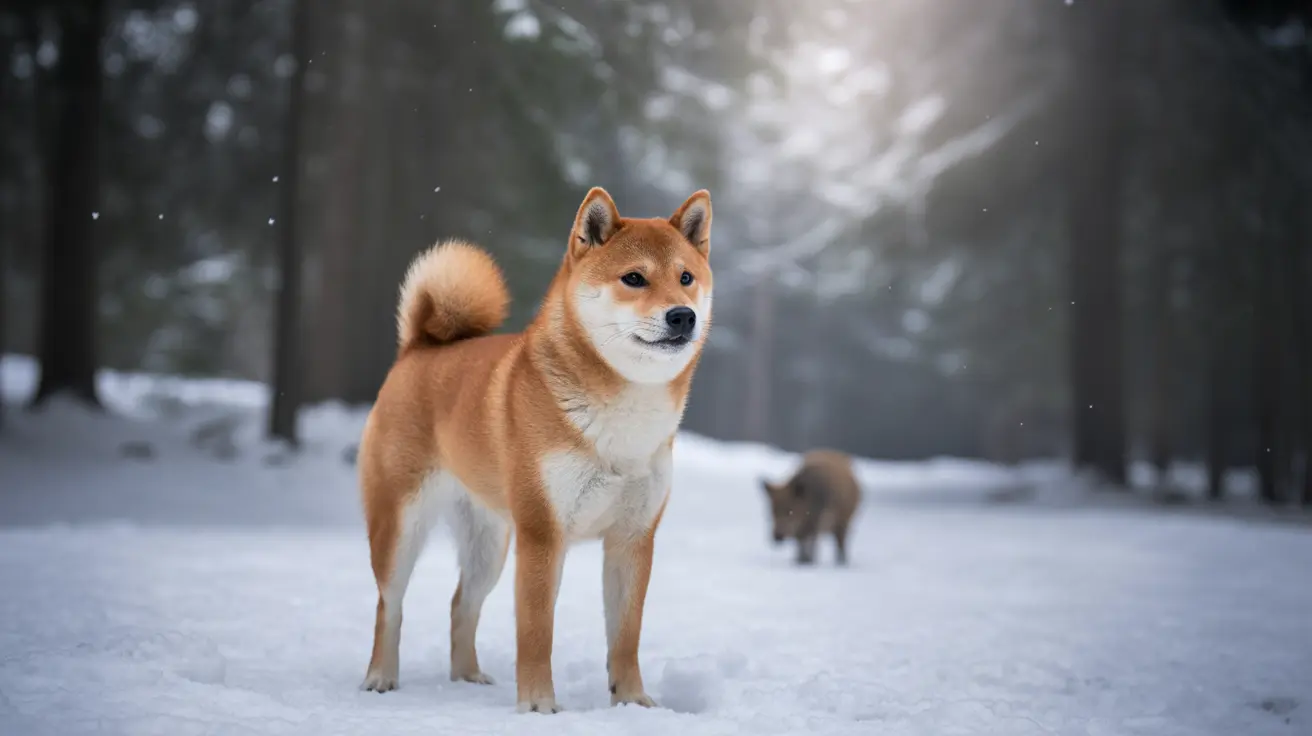Akitas, one of Japan's most revered native dog breeds, have a rich history spanning centuries of dedicated breeding for specific purposes. Originally developed in Japan's northern Akita Prefecture, these powerful and loyal dogs served multiple crucial roles that shaped their distinctive characteristics and temperament.
Understanding what Akitas were bred for helps explain their modern-day traits and care requirements. From their origins as fearless hunters to their elevated status as noble guardians, these dogs have consistently demonstrated remarkable versatility and unwavering loyalty.
Original Purpose: Hunting Large Game
Akitas were initially bred as hunting dogs, specifically for tracking and hunting large, dangerous game in Japan's rugged northern wilderness. Known as "Akita Matagi" or hunting dogs, they possessed the strength and courage to pursue formidable prey such as bears, wild boar, and deer.
Their thick double coat and powerful build were perfectly adapted to the harsh, snowy conditions of their native region. These physical attributes, combined with their keen hunting instincts, made them invaluable partners for traditional Japanese hunters.
Evolution into Noble Guardians
During the Tokugawa period (1603-1867), Akitas transformed from purely hunting dogs into prestigious guardians of Japanese nobility. Their impressive size, protective instincts, and dignified demeanor made them ideal protectors for both property and people.
The Japanese imperial family and aristocracy particularly valued Akitas, leading to special laws that protected and elevated the breed's status. This period marked a significant evolution in the Akita's breeding focus, emphasizing their guardian qualities alongside their hunting abilities.
The Samurai Connection
Akitas gained prominence as companions to the samurai class, where their loyalty and courage perfectly complemented the warrior's code of honor. These dogs served dual roles as both protective companions and efficient hunting partners, embodying the samurai's values of loyalty and fearlessness.
Modern Breeding Influences
The late 19th and early 20th centuries saw significant changes in Akita breeding practices. During the Meiji era, some Akitas were bred with larger dogs like Tosas and Mastiffs for dogfighting purposes, though this practice was eventually discouraged to preserve the breed's original characteristics.
World War II marked a critical period for the breed, with many Akitas lost to war conditions and government mandates. Post-war preservation efforts focused on restoring the original Akita type, leading to the development of distinct Japanese and American lines.
Characteristics from Selective Breeding
Centuries of purposeful breeding have resulted in distinct physical and temperamental traits:
- Powerful, muscular build suitable for hunting and protection
- Independent thinking abilities developed from hunting responsibilities
- Strong protective instincts derived from their guardian heritage
- Natural wariness of strangers balanced with intense family loyalty
- Exceptional intelligence and problem-solving capabilities
Frequently Asked Questions
What were Akitas originally bred for in Japan?
Akitas were originally bred as hunting dogs (Akita Matagi) in northern Japan, specifically for tracking and hunting large game like bears, wild boar, and deer. Their strength and courage made them ideal for this dangerous work.
How did Akitas serve samurai and Japanese nobility historically?
Akitas served as both protective companions and hunting partners to samurai warriors. For Japanese nobility, they acted as prestigious guard dogs, protecting property and family members while symbolizing status and honor.
Why were Akitas used for hunting large game like bears and wild boar?
Akitas were chosen for hunting large game because of their powerful build, courage, and ability to work independently. Their thick double coat protected them in harsh weather, while their strength and agility allowed them to track and hold large prey until hunters arrived.
How did crossbreeding affect the Akita's role in dogfighting during the Meiji era?
During the Meiji era, Akitas were crossbred with larger breeds like Tosas and Mastiffs to increase their size and fighting ability. This temporary deviation from traditional breeding practices later led to efforts to restore the original Akita type.
What protective and loyal traits make Akitas good family guardians today?
Akitas retain their historical protective instincts and loyalty, making them naturally vigilant family guardians. They demonstrate strong devotion to their families while maintaining a reserved attitude toward strangers, traits directly inherited from their noble guardian heritage.
Conclusion
The Akita's breeding history as a hunter, guardian, and companion has created a dog breed of remarkable complexity and capability. Understanding what Akitas were bred for helps modern owners appreciate their unique characteristics and provide appropriate care and training to these noble dogs.






